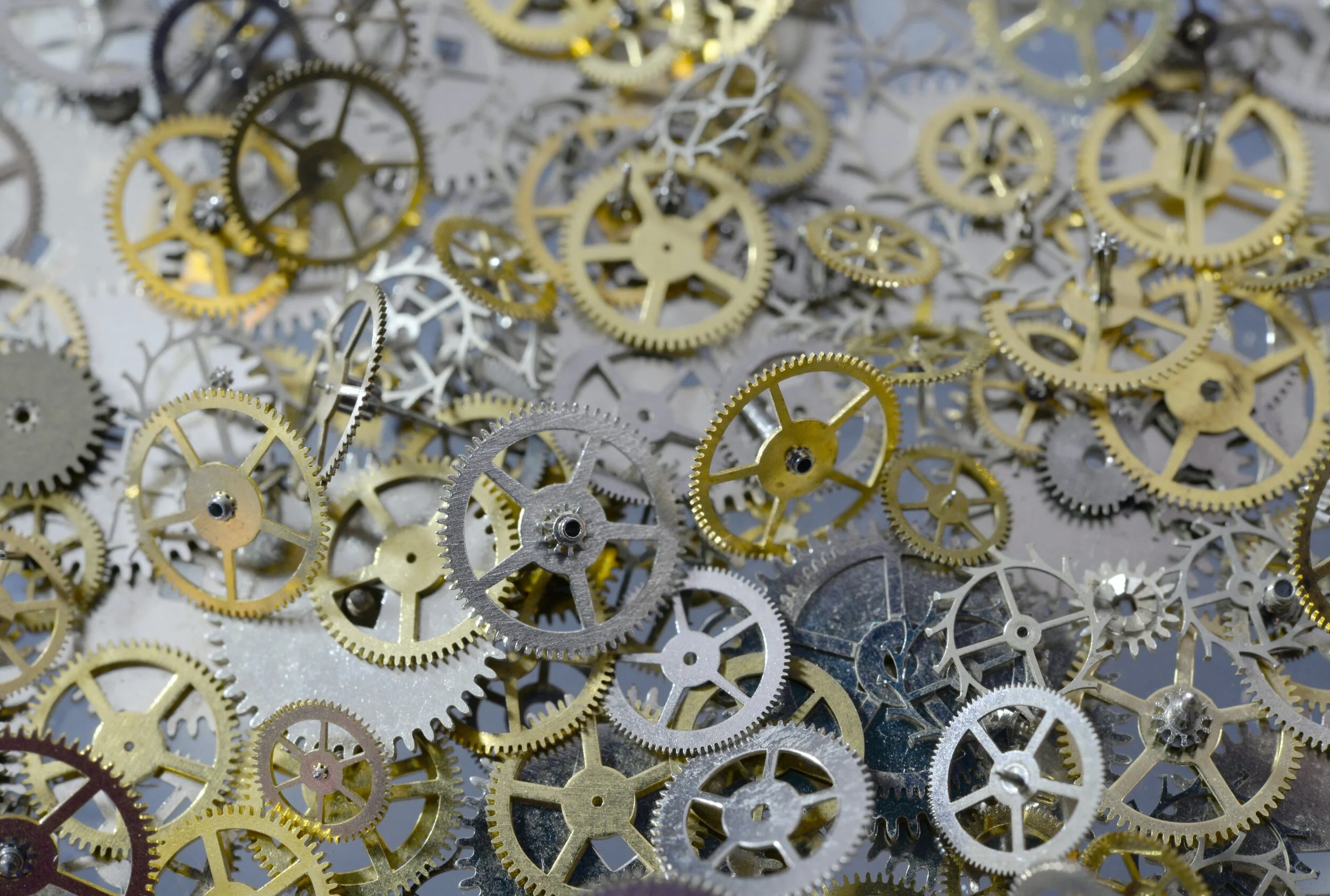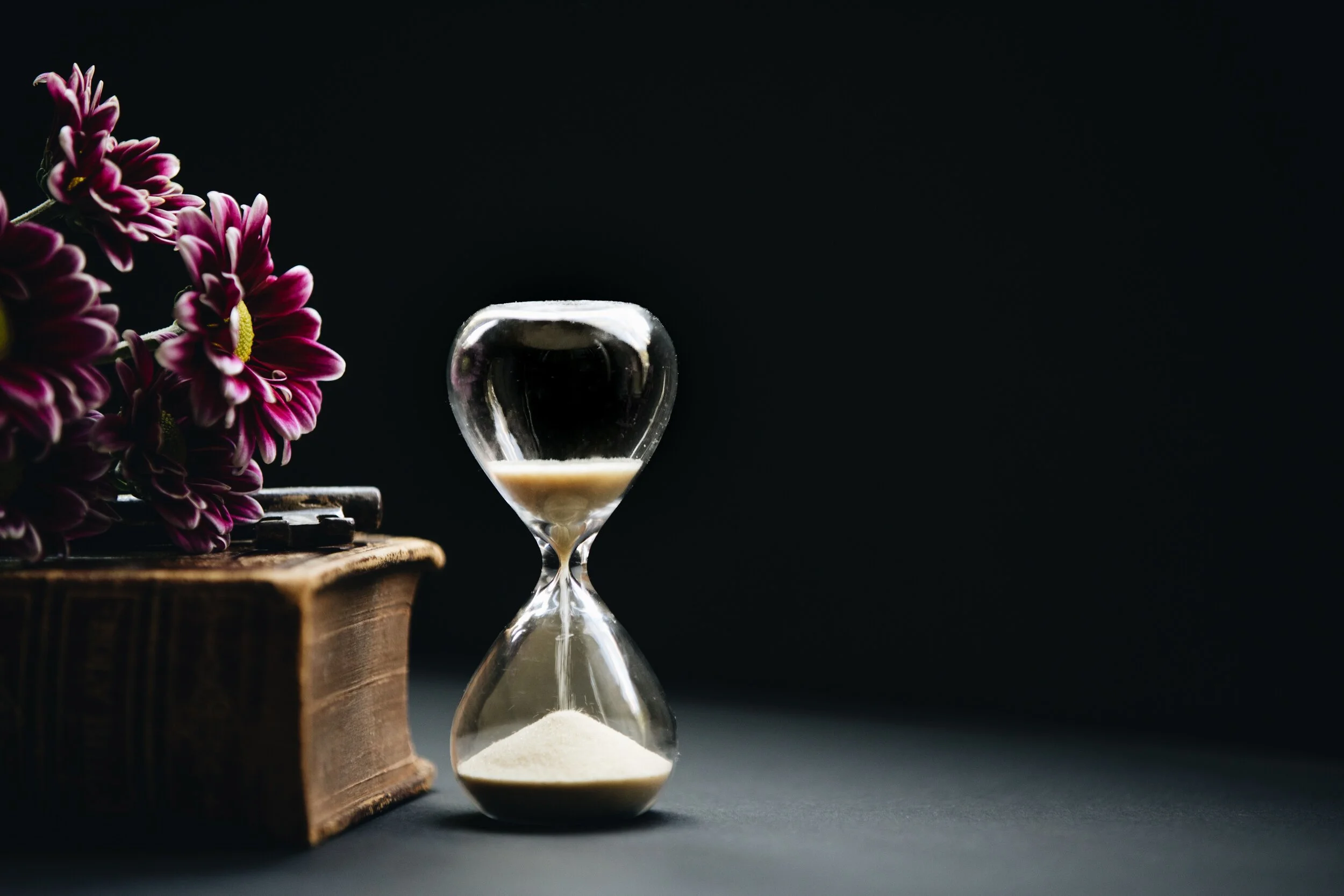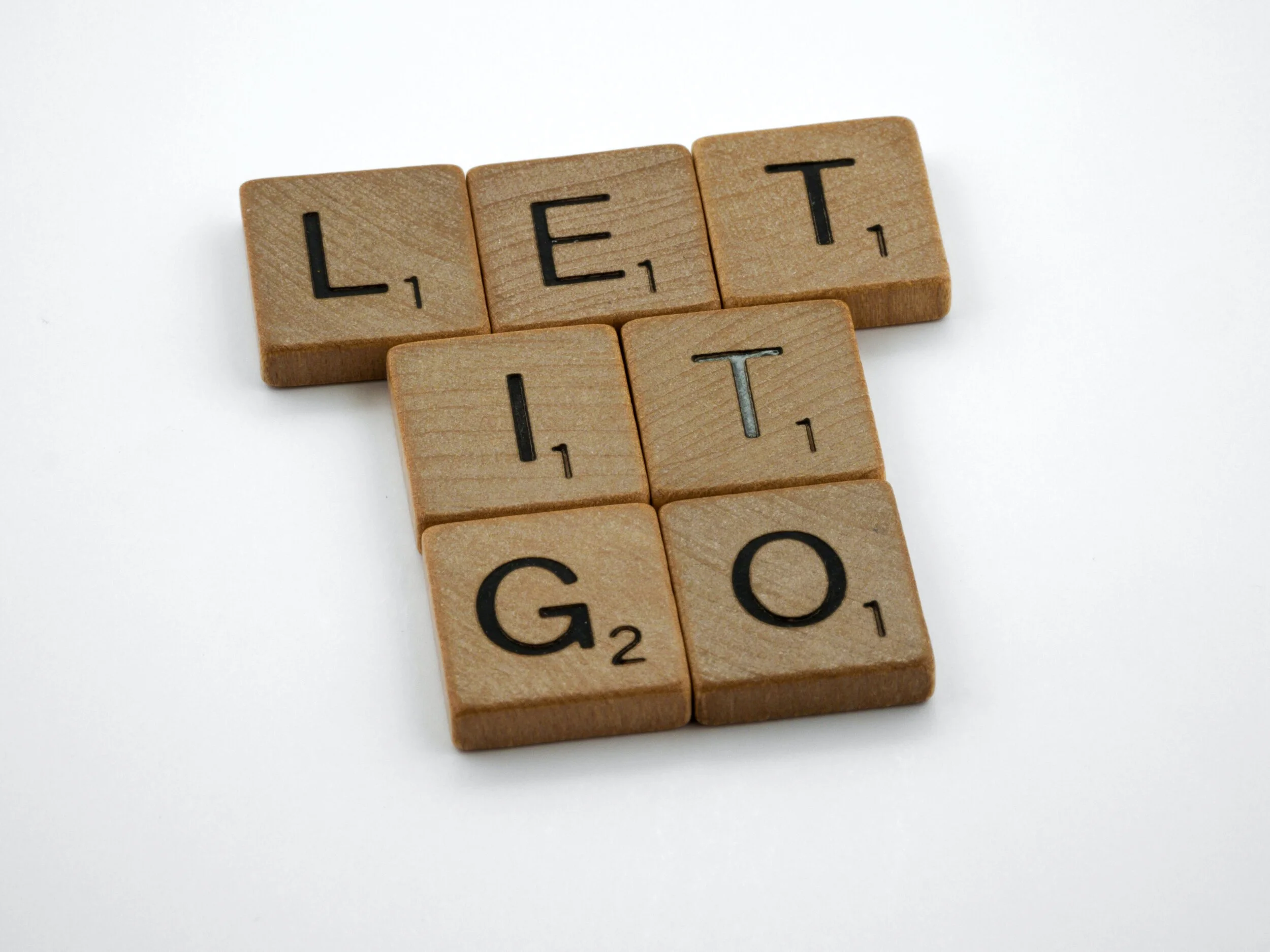What An Old Watch Has Taught Me About Meditation
Sidewalk sales.
You know, those weekend activities where people’s personal effects are displayed outside their home and sold to the highest bidder. Bargains and treasures abound! But maybe not the most obvious place to find a new meditation teacher.
But on a sunny Saturday morning in San Francisco, that’s where I saw it. It was a well-worn 1940s Bulova ladies wristwatch, and I snapped it up. I liked it for its rose gold face, never suspecting it would turn out to be one of the most insightful meditation teachers I've ever had.
Here’s why:
It needs a daily kickstart
Analog watches need gentle winding, being careful not to overwind the fragile mechanism. The eight to ten rotations of the wind-up mechanism are a daily reminder of a new day. Much like the daily practice of meditation and breathwork, the more consistent attention we pay to our practice in any small way on a daily basis, the more in-tune we can become.
It requires nurturing
Being of a certain age, the watch is fragile and so must be worn mindfully. Minor bumps have the potential to displace the face, and any exposure to water may render the mechanics inoperable, so it needs to be cared for and nurtured to stay in optimal working condition. Like an effective meditation practice, it requires gentle and mindful attention and awareness.
It comes with a story
We all carry the nicks, scratches, bumps and imperfections of our life stories. It’s what makes us beautiful. The watch arrived with a well-worn leather strap, a second hand in need of replacement, and according to the seller, was last worn on a beach in Greece. The richness of a practice lies in the stories, whether they’re about resisting a meditation practice, or how we came to find a practice that works for us.
It isn’t always perfect
According to the repair store’s owner, the watch loses up to one second an hour, so it will fall “out of time.” It’s not perfect. So too meditation. Some days everything feels in sync and you lose track of time. Other days, your mind is wandering to the inner clock yearning for the sit on the meditation cushion to be over. Both experiences are perfect in their own way.
Sometimes It stops
Sometimes meditation can feel elusive, overwhelming, or just another stress in daily life. It’s okay to stop. That’s the beauty of a practice. Sometimes rest is what is necessary to rustle up the motivation to get going. And when the rest is over, it’s only eight to ten winds of your inner motivation until you are back in time again.
Finally, and more a comfort than a lesson, is the watch’s audible ticking. Not to track the duration of a meditation, but as a focal point to help count out a breath cycle. Maybe a four-count equal part breath to get centered, or a four-count inhale and a six-count exhale to help settle anxiety when it rises. Ultimately that ticking can be a reminder that equilibrium is never far away.
The sweetest of gifts can come from the simplest of pleasures.
See you on the cushion.
Namaste,
Beck
What We're Reading:
Here's what has piqued our interest this week in the world of wine and mindfulness.
The Pandemic Gave Us a Lesson on the Importance of Hugs – Greater Good Science Center.org
Research reveals what happens to your body and mind when you're missing physical touch.
How to Work Out for Your Mental Health - GetPocket.com
Get physically fit while also paying mind to anxiety and depression.
How to Stop Getting Distracted and Regain Your Focus - Entrepreneur.com
Are daily distractions causing you problems at home and work?
The Apps and Websites You Need for International Travel During Covid and the Reopening - WSJ.com (possible paywall)
Here are tips for looking up entry requirements, digitizing necessary documents and expediting check-in now that traveling abroad is becoming possible again.
Meet the Community!
Here we meet some of the talented folks who make our community profession so dynamic.
Campbell Mattinson, writer, wine reviewer, founder of The Winefront, the Big Red Wine Book (2008, 2009, 2010) and author of “WE WERE NOT MEN”. (Melbourne, Victoria, AUS)
Years in the Industry.
I started a journalism cadetship in 1987 but my first wine-related article was in 2000.
My Three Biggest Challenges to Wellness:
The volume of alcohol, in three different ways.
1. The biggest threat is of course the amount of wine that I consume. On any given day there will be hundreds if not thousands of wine (sample) bottles at home. Keeping the amount of it that I drink in check is not just a constant battle but, glacier-like, a creeping one. The price I pay for free wine samples is eternal vigilance. I often pick up a glass of wine, and drink it, and as I do I think to myself: I don’t want to be doing this. Abstinence is much easier than moderation but abstinence in the normal run of the wine reviewing world is effectively impossible.
2. Then, there’s the amount that I don’t drink, but merely ‘taste’. Tasting is much better (for you) than drinking but when done in heavy volume, day after day, it takes a physical toll than is heavier than is generally acknowledged. If I do a three months burst of intense tasting for a book, for instance, I am completely physically wrung out by the end of it.
3. And then there’s the presence of the physical bottles themselves. When free wine samples started arriving unbidden on the doorstep, 20 years ago, it felt like the best thing ever. When your whole house is overrun though with these free unsolicited bottles, 20 years later, it can have the most profoundly debilitating effect. Everywhere I look, all the time, I see bottles, and these bottles represent work, and this work represents the hopes and dreams of real-life wine people. Sometimes it feels as though all these bottles are staring at me, hoping that they’ll be picked next. If you can’t beat them, leave them. The day I took my writing self to a remote office, and left the wine at home, was the day I started to feel better.
How I Keep it Together:
Sometimes I keep it together. Sometimes I don’t. Physical and mental wellbeing has a tide to it; it goes out and it comes back, or it does for me. I set myself weekly exercise goals, based on time: every week I make sure that I spend XX hours getting a good amount of air into the lungs.
Some days I walk, some days I cycle. Cycling is particularly good because you get drawn into its community. Cycling is an exercise in Aerodynamic Management, which is why cyclists hang around in groups. The better the group you’re in, the better you’ll ride. It’s not a bad lesson.
But these days I mainly keep it together via photography. Indeed I’ve been known to say that photography saved my life. I took it up maybe four years ago, in terms of using a proper camera etc, and like all these things it works because when I’m looking through the viewfinder there’s nothing else in the world other than the frame of the shot and the moment itself. It makes you concentrate on the now like there’s no tomorrow. And it makes you appreciate/worship the most basic of things: light. Remarkably, I started writing a novel in 1990 and didn’t finish it until 2020. It had me stuck, in more ways than one. But then I started playing with cameras, and watching the light, and focussing on the moment, and before long that novel I’d been contorting myself over for all those years suddenly picked its ears up and start wagging it tail at me, as if I’d found my way home to the heart of it just by looking outside and zeroing in on the light.
What Inspires Me:
Anyone who keeps going when it would be fair and reasonable to give up. And anyone who dreams high when it would be fair and reasonable to dream low.
A Quote I Love:
It’s not an inspiring quote, and yet it is. ‘Everything happens a certain number of times, and a very small number, really. How many more times will you remember a certain afternoon of your childhood, some afternoon that's so deeply a part of your being that you can't even conceive of your life without it? Perhaps four or five times more. Perhaps not even.’ Paul Bowles, The Sheltering Sky.
You can connect with Campbell on Instagram @campbellmattinson, Facebook, and Campbell Mattinson.com
NEW Episode: The Fine Line Podcast:
Episode 24: Dr Todd Dorfman
For the latest episode of The Fine Line Podcast: Balancing Hedonism & Health, the team speaks with Dr Todd Dorfman. Dr. Dorfman is the Founder, CEO, and Medical Director of Cedalion Health, which he opened in 2002 in Boulder, Colorado, balancing a private practice with his role as an emergency room doctor.
The Fine Line Podcast is co-hosted by Lisabeth Danneels and Emily Gold. Even the sub-title (Hedonism & Health) indicates the commonalities with A Balanced Glass. Please check them out!
Shop our ABG Merchandise
Hydration, safety and style are all possible with ABG Merch. The offerings are a small list of high quality items that we have road-tested and reviewed, and hope they help support your self-care, while staying hydrated, safe, and stylish! Check it out here.







